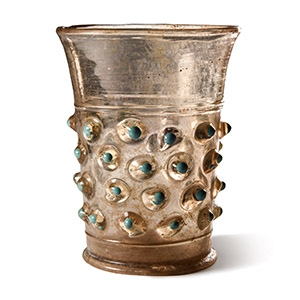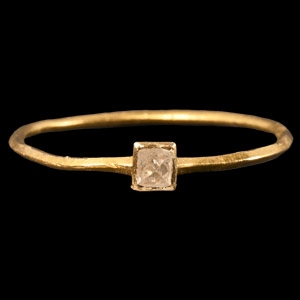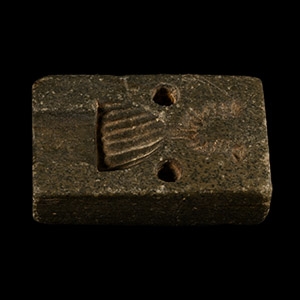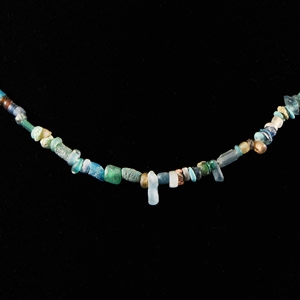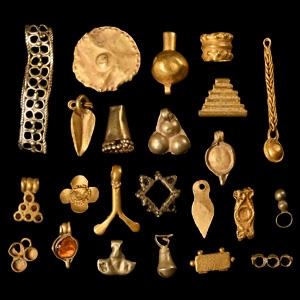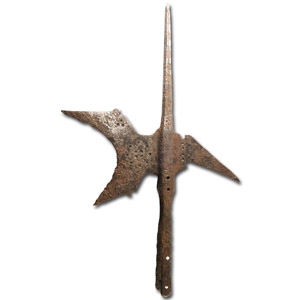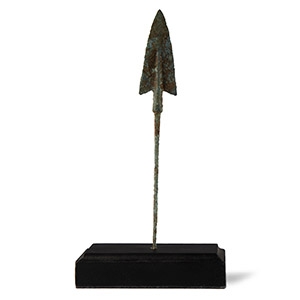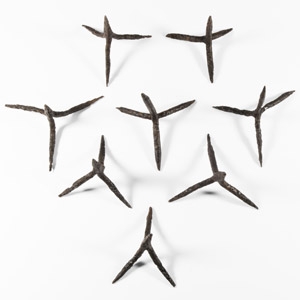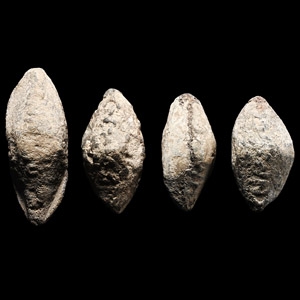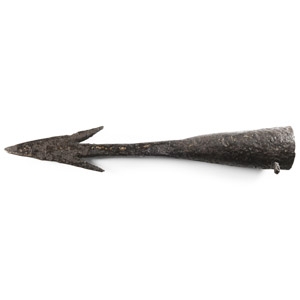Home > Auctions > 5 - 9 December 2023
Ancient Art, Antiquities, Natural History & Coins
Auction Highlights:
From the property of the late Mr SM, London, UK, 1969-1999.
UK gallery, early 2000s.
UK gallery, early 2000s.
London, UK gallery 1971-early 2000s.
with Bonhams, London, Islamic & India Art sale, circa 2015, p.45, lot 55.
This lot has been checked against the Interpol Database of stolen works of art and is accompanied by search certificate no.202353.
Ghurid Dynasty metalwork is poorly represented when compared to the architecture of the period, and the majority of surviving pieces are items of jewellery mostly in Russian museum collections. The sculptural nature of the decoration of this repoussé sheet sets it apart from the more usual output of Iran at this time, recalling the fine silversmithing of the Sasanian period.
UK gallery, early 2000s.
Cf. Hussein, M.M., Altaweel, M., Gibson, McGuire, Nimrud The Queen’s Tombs, Baghdad-Chicago, 2016, pl.163, lett.e, and 164, lett.b, for similar bead necklaces made of a mixture of stones, included faience.
Similar beads were found during the excavations of the royal tombs of Nimrud. Thousands of beads were discovered in the sarcophagi, including those of Nimrud’s Queens; they probably originally formed part of wide collars with multiple strands.
From a late Japanese specialist collector, 1970-2000s.
Ex California, USA, collection formed since the late 1960s.
European art market before the late 1990s.
Cf. similar in the Tower Armouries Collection, Leeds, under accession no.VII.1534.
Acquired 1980-2015.
Ex Abelita family collection.
See Khorasani, M.M., Arms and Armour from Iran. The Bronze Age to the End of the Qajar Period, Tübingen, 2006, figure 470, for the type.
According to Khorasani, this type of arrowhead belongs to a subcategory of the category of type V of Luristan arrow points. In the four categories of triangular bronze arrowheads from Luristan, Marlik and Northern Iran individuated by Negahban, subtypes C and D of type V are larger arrow or javelin heads, C with barbed shoulders and D with round shoulders.
From the private collection of a London gentleman, from his grandfather's collection formed before the early 1970s.
Cf. Žákovský, P., ‘Caltrop. Contribution to the knowledge of one neglected weapon’ in Studia Minora Facultatis Philosophicae Universitatis Brunensis, M 12-13, 2007-2008, pp.115-132, fig.9, no.6 (type III of Žákovský classification).
Ex M.Cummings, UK, 1990s.
Cf. D'Amato, R. and Sumner, G., Arms and Armour of the Imperial Roman Soldier: From Marius to Commodus, 112 BC-AD 192, London, 2009, fig.32, p.45, for similar glandes from Zaragoza Museum, the one with the name of Pompey inscribed coming from Munda battlefield.
These shots (mainly of type IIb of the Völling classification) are marked with the abbreviated name of Cn.Pompeius; they were used in quantity at the Battle of Monda (or Munda) against the Caesarian troops, by the followers of Pompey, on 17th March 45 B.C. Similar missiles were used in the civil war between Pompey and Caesar, and in all Caesar's wars. The projectiles of the slingers could be in lead (glandes) or in pottery or stone (lapides). Sometimes they were signed with the name of the general, or used to report some injuries, for example the sling missile found in Alesia with the name of Labienus.
From the collection of B. Posey, UK, 1990s.
Cf. Southern, P. & Dixon, K.R., The Late Roman Army, London, 1996, fig.46, pp.113-115; See Barker, P., The plumbatae from Wroxeter, in Hassall and Ireland, De Rebus Bellicis, BAR Int. Ser., vol. 63, Oxford, 1979.
The lead-weighted darts known as plumbatae mamillatae, (or breasted javelin) were short darts mounted upon a shaft, of the same shape, and thrown from a short distance. A Roman soldier would typically carry around 5-6 of these darts at any one time, fastened to the back of his shield. They could be thrown overhand or underhand, with an effective throwing range of up to 60 meters by trained soldiers. They could also be fixed upon longer shafts.
From the private collection of a London gentleman, from his grandfather's collection formed before the early 1970s.
Cf. Bemmann, G. & Bemmann, J., Der Opferplatz von Nydam, Die Funde aus der älteren Grabungen, Nydam I und Nydam II, Neumünster, 1998, no.1063, pl.116, for similar.
Since the third century, Roman soldiers increasingly started to use long shafted socketed weapons with barbed heads. These weapons were called bebrae by Vegetius, according to whom they were able to cut heads with a single stroke. They first appeared in Northern Europe, as shown by numerous finds of barbed heads in graves and peat-bogs, especially Danish, and were introduced to the Roman army by Germanic mercenaries.
781 - 792 of 2409 LOTS

.jpg)


.jpg)

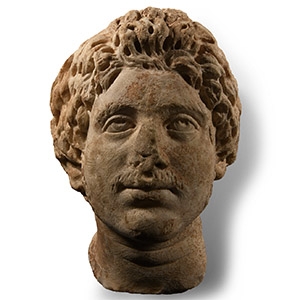
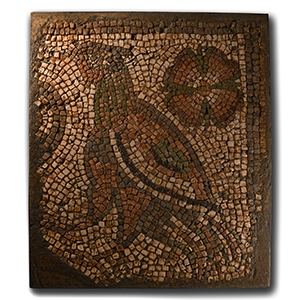
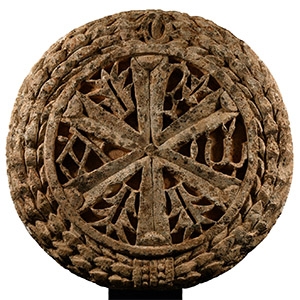


.jpg)


.jpg)
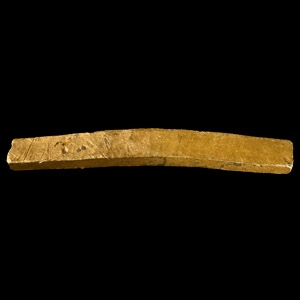
.jpg)
